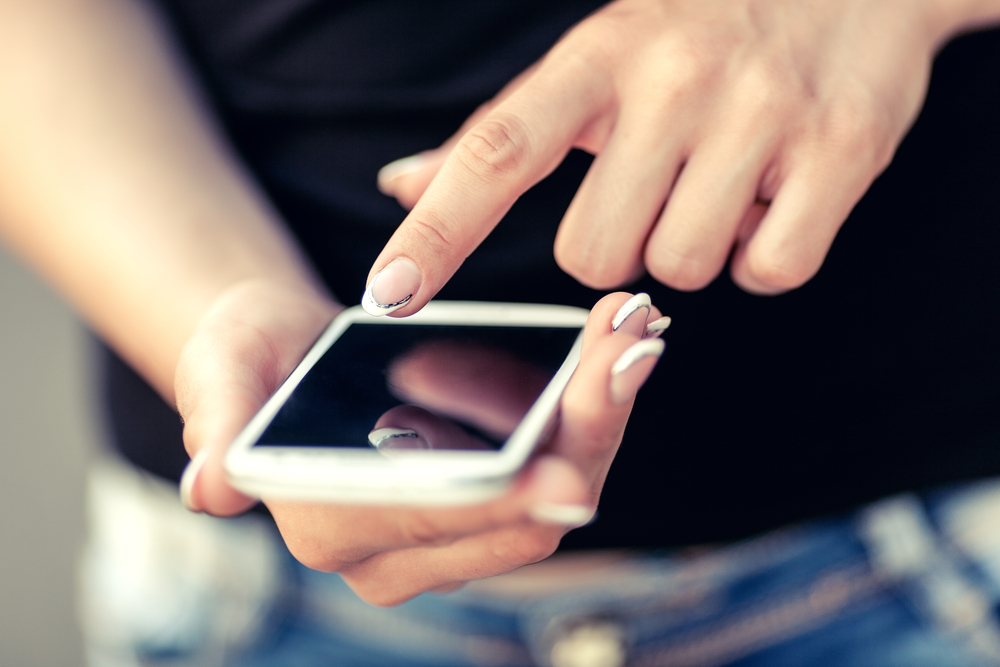Smartphone App May Offer Needle-Free Way to Screen Blood for Anemia
Written by |

Engineers and computer scientists from the University of Washington (UW) have developed what they are calling a HemaApp, designed to detect hemoglobin concentration using simply a smartphone camera and a little extra lighting — rather than needles or an expensive, specialized machine.
Measuring hemoglobin, a protein found in red blood cells, is particularly important for people with anemia and other blood disorders, who require frequent blood draws. The app is also thought to detect abnormal hemoglobin properties, which could help screen for diseases such as sickle cell anemia.
Described in an article that won a ‘Best Paper’ award, HemaApp will be presented at the Association for Computing Machinery’s 2016 International Joint Conference on Pervasive and Ubiquitous Computing (UbiComp 2016), taking place on Sept. 15 in Germany.
Healthcare providers now measure hemoglobin levels by drawing blood with a needle or an intravenous line, or by using Masimo Pronto, an U.S. Food and Drug Administration (FDA)-approved device that measures hemoglobin noninvasively by clipping a sensor onto a person’s finger. The device, however, is too expensive for many medical facilities worldwide.
“In developing countries, community health workers have so much specialized equipment to monitor different conditions that they literally have whole bags full of devices,” Edward Wang, the study’s lead author and UW electrical engineering doctoral student, said in a press release. “We are trying to make these screening tools work on one ubiquitous platform — a smartphone.”
HemaApp works by analyzing the color of blood when light is shone from the phone’s camera — with a little help, for now, from external lighting — through a patient’s fingers, and then estimating hemoglobin concentrations. By analyzing how colors are absorbed and reflected across wavelengths, it can detect concentrations of hemoglobin and other components, like plasma.
HemaApp was tested in an initial trial including 31 patients. Requiring only one smartphone modification, HemaApp performed as well as the Masimo Pronto, the researchers said.
To make sure that the technology works on different skin tones and body masses, the team developed processing algorithms that use the patient’s pulse to differentiate between the properties of the patient’s blood and the physical aspects of the patient’s finger.
The UW team tested the app under three different scenarios: using the smartphone camera’s flash alone, in combination with a common incandescent lightbulb, and with a low-cost LED lighting attachment – additional light sources fall onto other sections of the electromagnetic spectrum that aren’t now found on all smartphone cameras.
“New phones are beginning to have more advanced infrared and multi-color LED capabilities,” said Shwetak Patel, the paper’s senior author and an endowed professor in Computer Science and Engineering and Electrical Engineering at UW. “But what we found is that even if your phone doesn’t have all that, you can put your finger near an external light source like a common lightbulb and boost the accuracy rates.”
In the initial studies, HemaApp’s hemoglobin measurements had a 69% correlation to a patient’s complete blood count (CBC) test, a 74% correlation when using a common incandescent light bulb, and an 82% correlation using a small circle of LED lights attached to the phone. Masimo Pronto scored an 81% correlation to the blood test.
The app is not meant to replace blood tests, but results suggest that it could be an effective and affordable screening tool to determine if blood testing is needed. When used in anemia screening, HemaApp accurately identified 79% of the cases of low hemoglobin levels and 86% when aided with light sources.
“Anemia is one of the most common problems affecting adults and children worldwide,” said Doug Hawkins, a UW Medicine, Seattle Children’s Hospital, and Seattle Cancer Care Alliance pediatric cancer specialist. “The ability to screen quickly with a smartphone-based test could be a huge improvement to delivering care in limited-resource environments.”
Further research steps include further testing of HemaApp to collect additional data and improve accuracy rates. The research project received financial assistance from the Washington Research Foundation.





